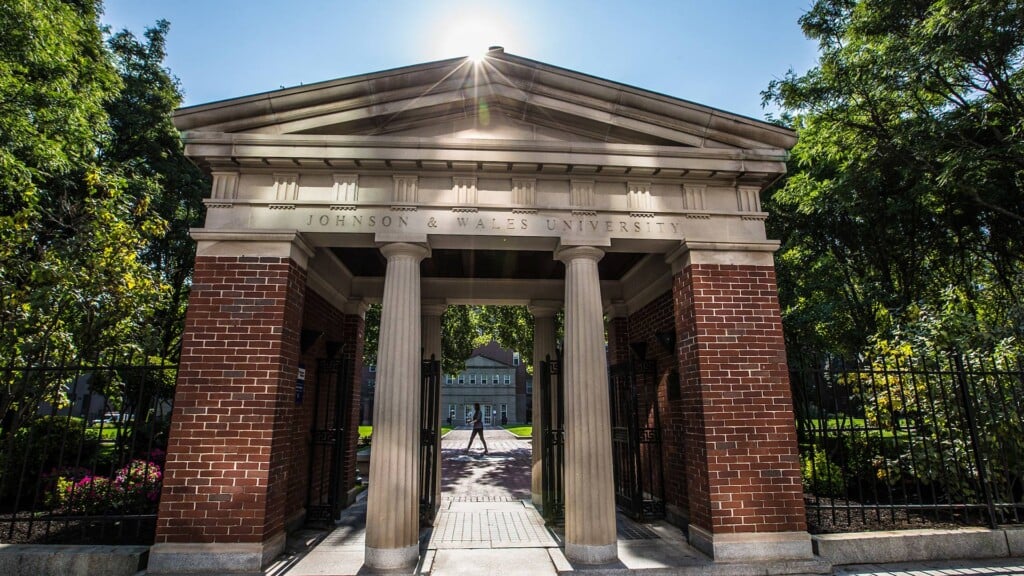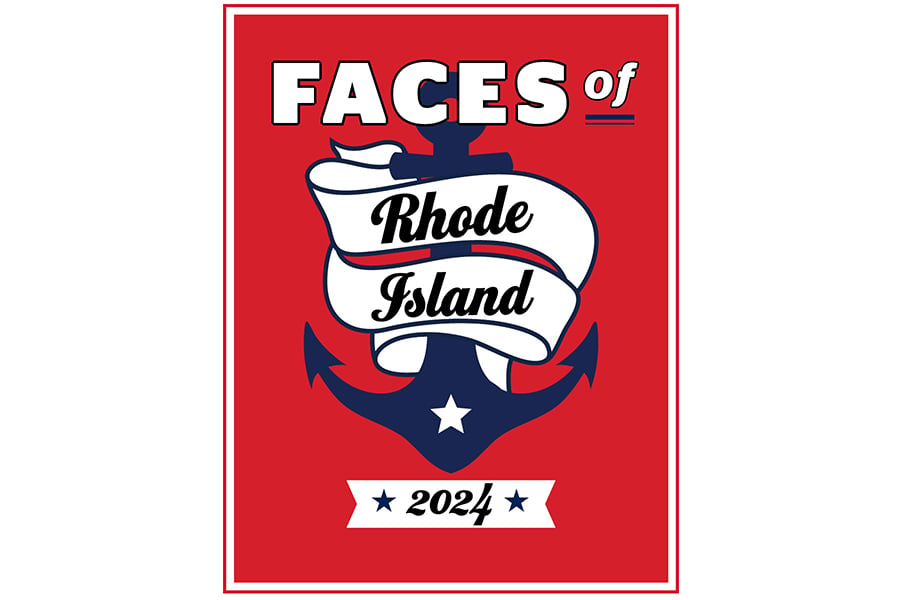Revisiting an Old Flame
A WaterFire insider dishes on how the iconic Rhode Island event still burns brightly after thirty years.

About seventy-six illuminated braziers warm crowd members as they watch the fiery production. Photograph courtesy of WaterFire/James Messina
The skies dim, crowds gather on the shore, and dozens of braziers light up against the smooth, dark waters of the Woonasquatucket, Moshassuck and Providence rivers.
It’s a familiar sight on summer and fall Saturdays in downtown Providence, but just what keeps WaterFire running on schedule? Contrary to its seemingly effortless production (all part of the magic, organizers say), every event represents months of work by employees and volunteers. Preparation starts deep in the winter, when summer evenings are just a hopeful glimmer on future guests’ calendars, and the work continues into the wee hours of the morning after every lighting.
With the installation marking its thirtieth season this year, we sat down with Tim Blankenship, director of special projects for WaterFire Providence, to get the scoop on just what goes into this fiery production.
Gathering Fuel
While most patrons don’t think about WaterFire until the day of their visit, planning begins several months ahead. “There’s a lot that goes on behind the scenes before we even get to the event,” Blankenship says.
The Providence River is tidal, which means employees must scrutinize the tide charts before setting dates for the season’s events. Too high of a tide, and the organization’s fire-tending boats can get stuck beneath the bridges; too low, and they’ll bottom out on the river’s sandy floor. The majority of the braziers — about seventy-six total this year — float up and down with the tides.
Employees also use the off-season to secure sponsors and perform regular maintenance on the braziers. Every other year, about half of the braziers are removed from the water for repairs. The original design by WaterFire creator Barnaby Evans consists of a three-pointed metal “star” attached to a basket and surrounded by buoys. Beneath the water, a heavy anchor secures the brazier in place.
“There’s about 350 pounds of weight so if the chain gets snagged, it’s not going to lift the whole thing,” Blankenship says.

No-Cancel Culture: The first time they ever canceled an event, Blankenship says, was after Hurricane Irene in 2011, when the storm dragged the braziers downriver. “Water coming in from upriver washed out the entire installation,” he says. “That took about a week to recover from.” Photograph via Juli Scalzi/I Stock Editorial/Getty Images Plus
Lighting the Spark
On the morning of an event, staff and volunteers gather at 6 a.m. to go over the day’s tasks. Each year, the organization has around 800 volunteers, with 150 on duty for each event. Volunteers tend fires, captain boats and set up a warehouse’s worth of equipment for every WaterFire.
“People don’t think about the expense and effort and work of putting it on,” Blankenship says.
Road closures start at 6:30 a.m., at which
point staff and volunteers begin running electricity and setting up tents and sound systems. The soundtrack for WaterFire is designed to immerse guests in the event and runs the gamut from opera to blues, jazz, classical and folk. The event also has two live music stages, and all of the equipment is stored in a warehouse in Cranston between WaterFires.
As sunset approaches, the team fills the braziers with an initial round of firewood. WaterFire consumes approximately 100 cords of wood every season, all of it purchased locally. (To put that into perspective, a cord consists of 600–800 pieces of wood.) The wood is replenished during the event by volunteer fire tenders who travel on WaterFire-owned boats. Each boat is also staffed with a captain and a first mate.
“It’s a really unique boating experience,” Blankenship says.
Feeding the Flames
When the sun sets, it’s showtime for WaterFire. Originally conceived by Evans as a sculpture, the guest experience today falls somewhere between a performance and immersive art, with details stimulating all the senses. Blankenship encourages visitors not to sit in one place, but to enjoy the many experiences the event has to offer. In the background, first responders — including police and fire personnel, emergency medical services and security — ensure a smooth run.
For those looking for a fresh perspective, Blankenship recommends hitching a ride with La Gondola or the Providence River Boat Company, which both offer tours during the event. The river is closed to pedestrian boats for the duration of WaterFire, but the two companies partner with the organization to navigate the river, becoming part of the spectacle themselves. On a good night, the event draws between 40,000 and 60,000 patrons, a number organizers estimate using aerial photography.
Dying Down
For most guests, WaterFire ends by midnight in the summer, when the braziers start to die down. For event staff and volunteers, however, the cleanup is just getting started. Road closures end at 6:30 a.m. the next morning, which gives organizers just a few hours to pack everything up and ship it back to Cranston before setting it up all over again during the next event. The twenty-four-hour marathon continues at least once a month until the season’s final full lighting in November.
“We say the season is from April to November and then technically we’re in the off season, but really, the work never stops,” Blankenship says.
After an end-of-season party for staff and volunteers, it’s back to preparing for the next season. In recent years, Blankenship says, the organization has faced challenges finding sponsors, as many assume the event runs with minimal outside support. The organization sets a sponsorship goal for each lighting and is working on creating more opportunities for small businesses, in addition to new and returning larger sponsors, to participate.
Next year, he’s hoping WaterFire can return to a full schedule of ten to twelve events per season. Until then, organizers will continue to produce the spectacle that’s become a staple of the city’s arts scene.
“I’ve been doing it for twenty-three years. It doesn’t get boring, that’s for sure,” he says.
Want to learn more about volunteering? Sign up at waterfire.org/volunteer.
Upcoming WaterFire Lightings
Saturday, Sept. 27
Celebrating Rhode Island Educators
Saturday, Oct. 4
Supported by Gloria Gemma Breast Cancer Resource Foundation
Saturday, Nov. 1
Salute to Veterans






























